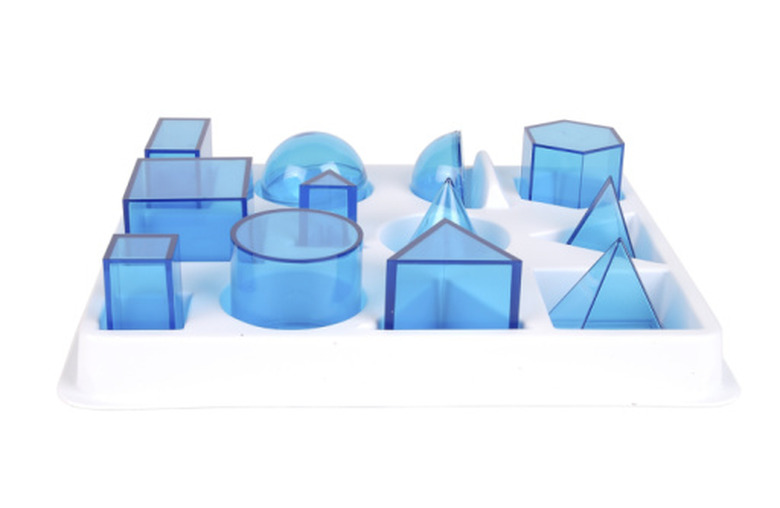How To Find The Surface Area Of A Hexagonal Prism
A hexagonal prism contains six two-dimensional rectangular-shaped and two two-dimensional hexagon-shaped sides that makes up the surface area. Although each hexagonal prism has its own dimensions and sizes, the mathematical calculation to find the surface area remains the same. By knowing the length and width of the rectangular-shaped sides and the corner length of one of the hexagon-shaped sides, you can find the surface area measured in square units.
Step 1
Find the length and width of one of the hexagonal prism rectangular sides.
Step 2
Multiply the length and width of the hexagonal prism rectangular sides to obtain the surface area of one of the rectangular sides. For example, if the length of the rectangular side was 10 inches and the width was 5 inches, the surface area of one of the rectangular side would be 50 square inches (10 x 5 = 50).
Step 3
Multiply the surface area of one rectangular side by 6 to obtain the total surface area for all the rectangular sides on the hexagonal prism. For example, if the surface area of one rectangular side was 50 square inches, the total surface area of all the rectangular sides would be 400 square inches (50 x 6 = 300).
Step 4
Find the length of one the corners of the hexagon-shaped sides. Because the hexagonal side has six equal corners, you can take the measurement of any one of the six corners.
Step 5
Plug the length of one of the corners of the hexagon-shaped sides into the equation: (3√3/2 )r^2. For example, if the length of one of the corners is 5 inches, the surface area of one of the hexagon-shaped sides would be approximately 92 square inches.
(3√3/2 )(5)^2 = 92 square inches.
Step 6
Multiply the surface area of the hexagon-shaped side by two, because there are two hexagon-shaped sides on a hexagonal prism. For example, if the surface area of one of those sides was 92 square inches, the total surface area of the two hexagon-shaped sides would be 184 square inches.
Step 7
Add the product you found in Step 3 and Step 6 together to find the total surface area for the hexagonal prism. For example, if the total surface area of the eight rectangular sides was 300 square inches and total surface area for the two hexagon-shaped sides was 184 square inches, the total surface area for the hexagonal prism would be 484 square inches (300 + 184 = 484).
Cite This Article
MLA
Lin, Chang. "How To Find The Surface Area Of A Hexagonal Prism" sciencing.com, https://www.sciencing.com/surface-area-hexagonal-prism-8657061/. 24 April 2017.
APA
Lin, Chang. (2017, April 24). How To Find The Surface Area Of A Hexagonal Prism. sciencing.com. Retrieved from https://www.sciencing.com/surface-area-hexagonal-prism-8657061/
Chicago
Lin, Chang. How To Find The Surface Area Of A Hexagonal Prism last modified August 30, 2022. https://www.sciencing.com/surface-area-hexagonal-prism-8657061/
